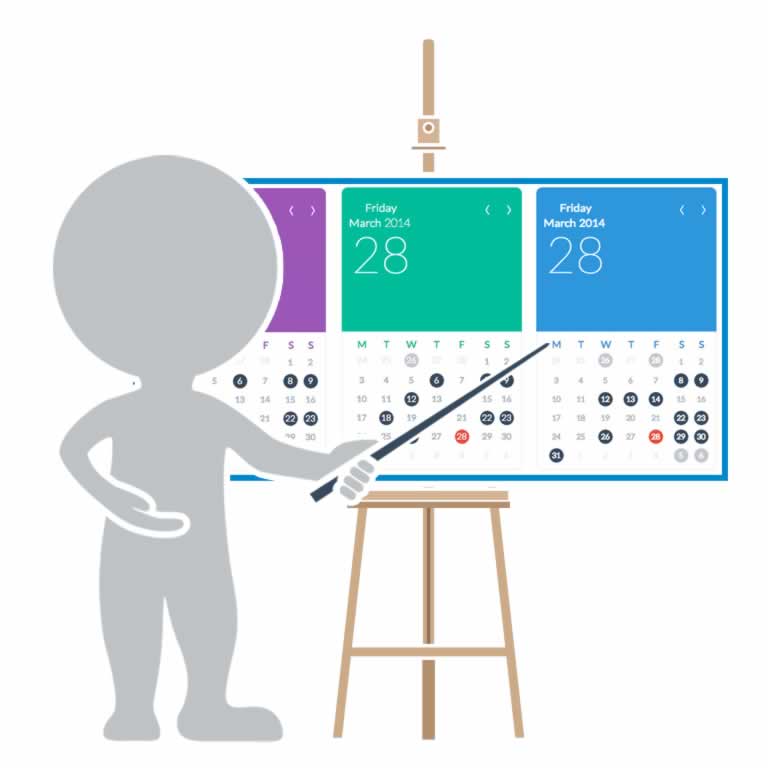Last Monday, September 27th, 2004 I had the honor of serving as a guest speaker for the “Realities of Orchestral Life” course offered by Eastman School of Music’s Institute for Music Leadership.
I had a wonderful time working with the students and was an honor to open their minds to issues they may not have previously considered. Collectively, they were sharp, engaging, and participated actively in the lecture and interactive portion of the class, titled “Negotiating Your Future”
Some Background
On Tuesday, September 21st, 2004 I published an article which outlined the financial history for the fictional “Sim Orchestra” the students were members of as well as detailing the issues we would be negotiating. This information was distributed to the students in advance so their designated negotiation committee could survey their peer musicians (classmates) and determine their negotiation strategy.
The class enrollment was 24 and five students were selected to be on the negotiation committee by the course instructor, Professor Ray Ricker. Of those five selected, three were designated to represent full time “A contract” players and two were designated to represent part time “B contract” players:
- “A contract” representative: Sebastian Kroll, trumpet – chairman
- “A contract” representative: Antonio Haynes, tuba
- “A contract” representative: Chun Chim (David) Leeung, violin
- “B contract” representative: Helen Bravenec, violin
- “B contract” representative: Sarah McKittrick, bassoon
Before the class began the negotiation committee attempted to poll their fellow musicians personally since the majority of them had not bothered to fill out or return the Player Surveys (not unlike real life). By the time class started at 6:00PM, the negotiation committee compiled the following information:







Based on those results, the players felt strongest about issues related to:
- maintaining/increasing their benefits
- retaining/increasing the number of “A contract players”
- keeping the length of their season the same
The Surprise
Life just isn’t fair. And my intention was to establish that fact as much as possible during this class. Among the seven year historical financial data distributed to the students, the final season contained projected financial results.
The interactive mock negotiation was scheduled to take place after the class break, but ten minutes before that I presented the\ students with the Sim Orchestra’s actual financial results. Chart A details how the numbers came in well below the projected figures management initially supplied to the players.
|
Chart A: Sim Orchestra Season |
03-04 Projected |
03-04 Actual |
|
Full Time Players (A contract) |
50 |
50 |
|
Per Service Players (B contract) |
25 |
25 |
|
FT Base Salary |
$22,895 |
$22,895 |
|
PS Base Salary |
$12,754 |
$12,754 |
|
Season Length – A Contract |
35 weeks |
35 weeks |
|
Guaranteed Services Per Year |
189 |
189 |
|
Medical Insurance Paid By Employer |
80% |
80% |
|
Dental Insurance Paid By Employer |
50% |
50% |
|
Pension Plan Employer Matching contributions |
4% |
4% |
|
Annual Budget |
$5,684,588 |
$5,684,588 |
|
Annual Revenue |
$5,750,000 |
$4,766,834 |
|
% Of Budget Derived From Earned Income |
48% |
29% |
|
Annual Surplus/Deficit |
$65,412 |
($917,754) |
|
Accumulated Surplus/Deficit |
($39,645) |
($957,399) |
|
Endowment |
$6,985,455 |
$6,988,232 |
|
% Of Budget Paid To Musicians |
45% |
45% |
|
Artistic Expenses |
$2,589,026 |
$2,589,026 |
|
Operational Expenses |
$3,095,568 |
$3,095,568 |
Obviously, the Sim Orchestra is in some big trouble; they’ve run up a 16% season deficit.
The New Deal
But wait, the orchestra’s board and management (represented by yours truly) have created a three year plan for recovery which was presented to the musicians immediately after the news about the actual year end finances:
After a thorough audit and review of current and historical financial information, the board has determined that in order to prevent bankruptcy, significant changes will need to occur in the upcoming contract. As a result, it is necessary to make corrections to the upcoming collective bargaining agreement so that we adjust annual expenses by $2,184,588. As a result:
- Our expenditures will remain consistent with what our community can support.
- Our artistic achievement remains at its current high level.
- We maximize revenue by using a flexible business model which better manages our cash flow on a monthly basis.
The management then presented the musicians with three separate options designed to reduce the annual expenses by the necessary $2,184,588 as well as produce a yearly surplus that would allow the accumulated deficit to be paid off in three years. Each option carried a different amount of risk:

All proposals:
- Adjust expenditures to address structural deficit.
- Provide for a flexible, automatically renewable 1 year contract.
Proposal #1 – Moderate Risk
- Will require adjustments in artistic expenses by $1,189,026.
- $777,310 in adjustment are from the musicians and $411,716 from other artistic expenses.
- No change in Medical, Dental, and Pension contributions remain consistent.
- No service guarantee for per service players and a reduction of full time positions.
- Length of season reduced by 20%.
Proposal #2 – Low Risk
- Will require adjustments in artistic expenses by $1,189,026.
- $1,019,700 in adjustment are from the musicians and $169,326 from other artistic expenses.
- No employer contributions to Medical, Dental, and pension plans.
- Per service positions expanded to 50 with a minimum service guarantee of 75 and a reduction of full time positions.
- Length of season reduced by 20%
Proposal #3 – High Risk
- Will require adjustments in artistic expenses by $1,189,026.
- $660,650 in adjustment are from the musicians and $528,376 from other artistic expenses.
- Reduced employer contributions to Medical, Dental, plans, and pension plans contributions unchanged.
- Per service positions expanded to 43 with a minimum service guarantee of 150 and a reduction of full time positions.
- Length of season reduced by 15%
At this point the class came to a halt to take a scheduled break, as will this first installment.
I invite you to return tomorrow where the “Games Will Begin” as the students recover from the shell shock of the new information and prepare to begin the mock negotiation.
Postscript: The financial information for the fictional “Sim Orchestra” isn’t really all that fictional. It’s an amalgamation of information from several very real orchestras and the similar situations they have faced in the recent past.


